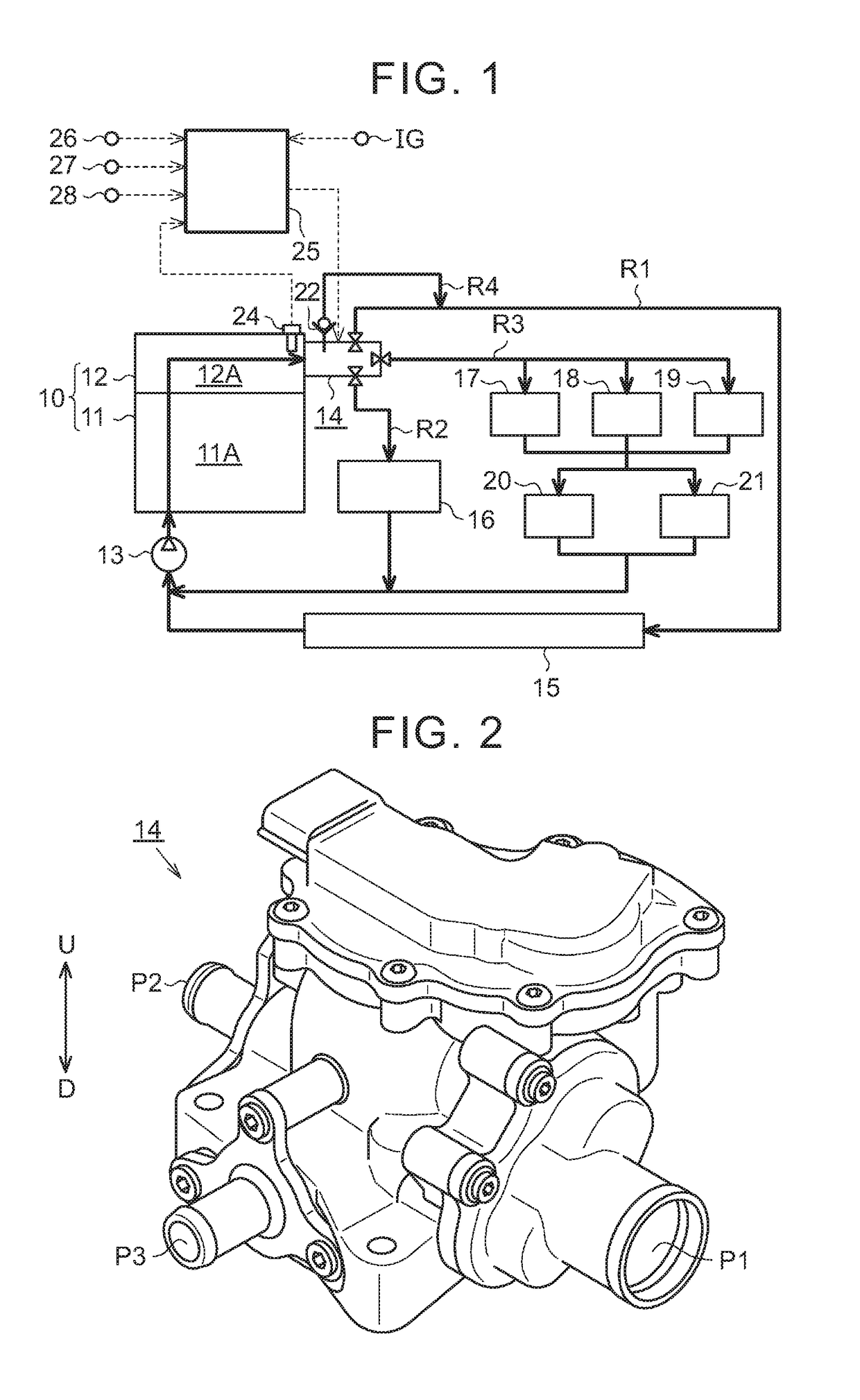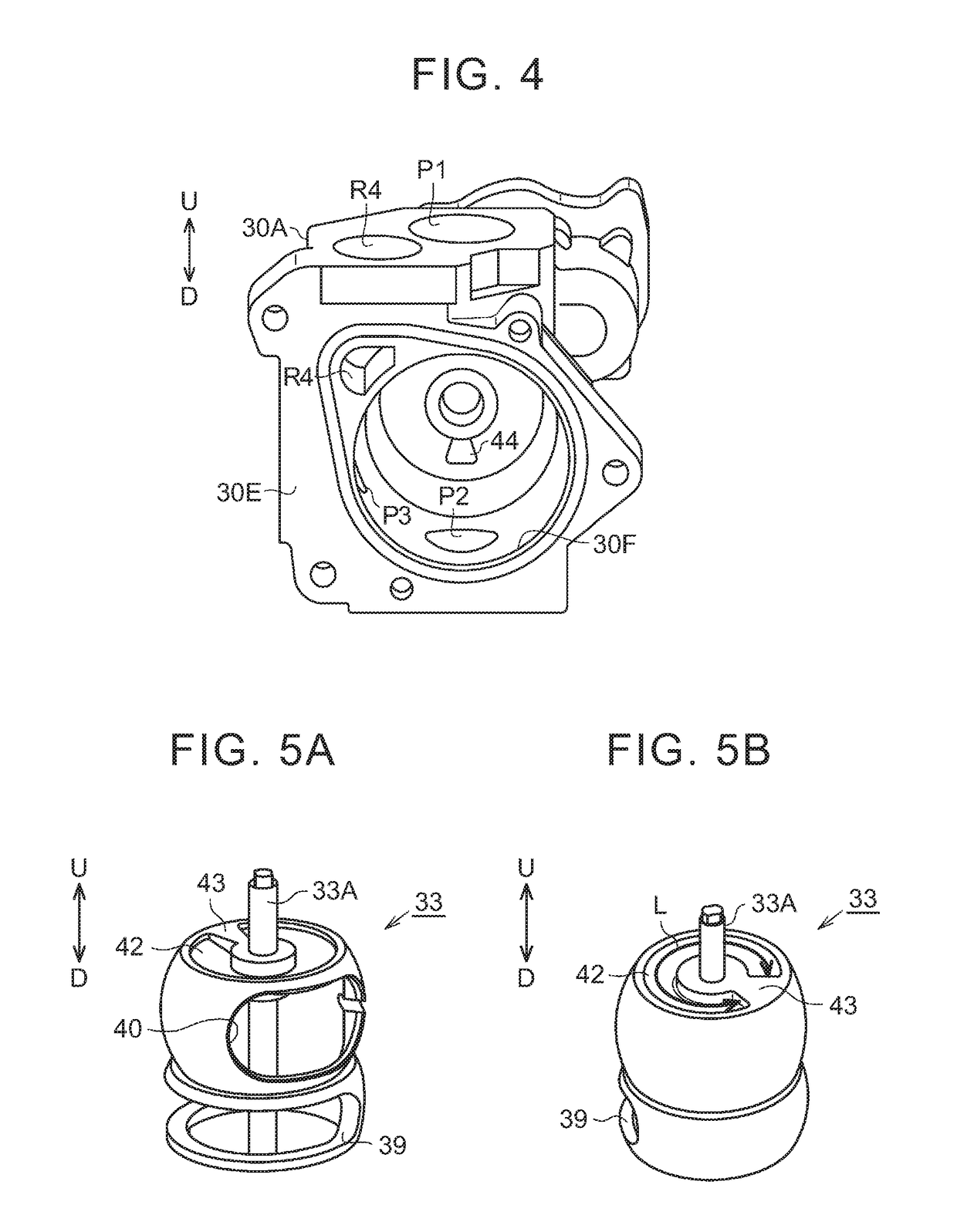Cooling device and cooling method for engine
a cooling device and engine technology, applied in the direction of control devices for cooling apparatus, fail safe, liquid cooling, etc., can solve the problems of delay in resolving the blockage in the coolant circuit, multi-way valve inoperable, blockage in the circulation of coolant immediately after the engine, etc., to reduce the maximum pressure, shorten the time, and reduce the pressure resistance performance of each part of the coolant circuit
- Summary
- Abstract
- Description
- Claims
- Application Information
AI Technical Summary
Benefits of technology
Problems solved by technology
Method used
Image
Examples
Embodiment Construction
[0027]In the following, one embodiment of an engine cooling device will be described in detail with reference to FIG. 1 to FIG. 8. First, the configuration of a coolant circuit through which a coolant for cooling an engine flows in the engine cooling device of this embodiment will be described with reference to FIG. 1.
[0028]As shown in FIG. 1, water jackets 11A, 12A that constitute a part of the coolant circuit are respectively provided inside a cylinder block 11 and a cylinder head 12 of an engine 10. A coolant pump 13 that circulates the coolant through the coolant circuit is provided in the coolant circuit on the upstream side from the water jackets 11A, 12A. The coolant discharged by the coolant pump 13 is introduced into the water jackets 11A, 12A. The water jacket 12A of the cylinder head 12 is provided with an outlet coolant temperature sensor 24 that detects the temperature of the coolant immediately before flowing out of the water jacket 12A (outlet coolant temperature TO)....
PUM
 Login to View More
Login to View More Abstract
Description
Claims
Application Information
 Login to View More
Login to View More - R&D
- Intellectual Property
- Life Sciences
- Materials
- Tech Scout
- Unparalleled Data Quality
- Higher Quality Content
- 60% Fewer Hallucinations
Browse by: Latest US Patents, China's latest patents, Technical Efficacy Thesaurus, Application Domain, Technology Topic, Popular Technical Reports.
© 2025 PatSnap. All rights reserved.Legal|Privacy policy|Modern Slavery Act Transparency Statement|Sitemap|About US| Contact US: help@patsnap.com



